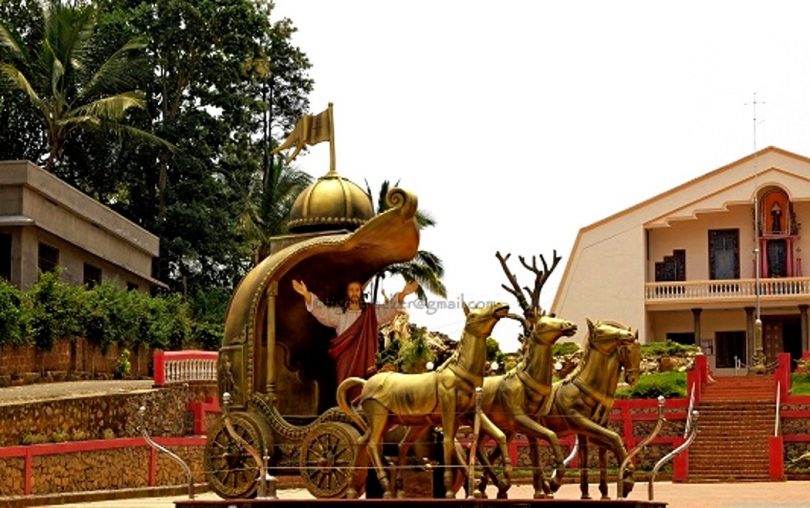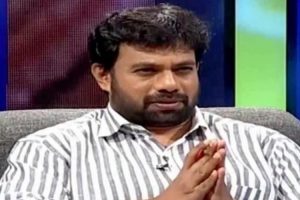Archaeology as a tool for evangelization and balkanization of India
In an interview to Malayalam weekly Madhyamam on October 15, 2018, Prof. Vasanth Shinde, veteran archaeologist and Vice Chancellor of Deccan College, Pune, premier institution of archaeological research in India, has dismissed excavations carried out at Pattanam in Kerala by Kerala Council of Historical Research as “dubious”. He completely rejected the claims made by the excavators — some of them lacked professional or academic expertise to carry out such an excavation. He was not alone. Eminent historians and archeologists such as Prof Dilip Chakrabarti, A.Sundara, MGS Narayanan, R Nagaswamy and T Satyamurti have also severely criticized the excavation sponsored and launched by the Left political parties and supported by dubious foreign Christian organisations.
Experts pointed out that the methodology used was dubious and reports false. Its links with questionable Church organizations in India and abroad and funding thereof had raised many eyebrows in the academic circles. Istvan Perczel from Hungary, one of the patrons of Pattanam, lauded it as the site where, Apostle Thomas landed in India and established Indian Christianity. The United Board for Christian Higher Education in Asia based in New York supported Pattanam excavator PJ Cherian in his historical studies. The Liturgical Research Centre of the Syro Malabar Church organized national seminars in 2005 at Kochi, and in 2011 at Kalyan in Mumbai, for corroborating Pattanam, and Christianity. Federico de Romanis, Biblical scholar from University of Rome was invited in 2009 by KCHR to conduct classes in Latin and Greece. Dr NM Mathew, member of KCHR, is also historian of the Malankara Marthoma Church.
The Ministry of Home Affairs identified the unbridled foreign funds received by KCHR and cancelled its license under the Foreign Contribution Regulation Act 2010. The KCHR was accused of creating fake government documents, illegal appointments and financial irregularities running into crores. It is also alleged that the KCHR obtained the licence for the Pattanam excavation after submitting fake documents to the Archaeological Survey of India.
(Read more at:
Prof K Rajan of Pondicherry University enters the scene
Of late, one of the foremost propagandists of Pattanam is Prof K Rajan of Pondicherry University who is currently member of the KCHR administration. Prof Rajan and Cherian jointly promote Pattanam. They link Pattanam with Kodumanal, Thandikudi, Porunthal Keezhadi and other archaeological sites in Tamil Nadu. When Rajan ignores serious allegations on duplicity on Pattanam and its Biblical agenda by eminent scholarship, it also raises serious doubts on sites in Tamil Nadu which he excavated and constantly associates Pattanam. R. Sivanantham, deputy director, Tamil Nadu state Department of Archaeology, officially arranged a lecture on Pattanam by Cherian on October 30, 2018. The programme was chaired by T Udhayachandran, Commissioner, Department of Archaeology, Tamil Nadu. The programme has been severely criticized by archaeologists.
Archaeological Survey of India conducted an inquiry into dubious methodologies adopted by the KCHR at Pattanam which was taken up by Amarnath Ramakrishna, the then superintendent archaeologist of the ASI, Bengaluru centre. His investigation has been suppressed, but later Amarnath Ramakrishna also took up the Keezhadi excavation. The CPI(M) which launched Pattanam has openly supported Amarnath Ramakrishna who supervised Keezhadi which shows how the notorious nexus between Church and Left historians. It is alleged that Amarnath submitted a favourable report for Pattanam excavations.
The carbon dating conducted at Pattanam, Keezhadi and Palani by Cherian, K Rajan and Amarnath Ramakrishna has been done by Beta Analytic Inc., Florida, USA which has raised eyebrows. These sites have been presently interlinked by these excavators. Archeologists say that the interlinking of Keezhadi and Pattanam sites has “strong undercurrents of secessionism”.
Marxists and their missionary position
There are serious allegations that the linking of these Tamil Nadu sites with Pattanam is designed to provide a Dravidian Christian identity for Southern India and help the Church raise political claims. The Left historians have always been the aggressive promoters of the Aryan-Dravidian binary. They propagated the theory of British linguists Francis Ellis and Alexander Campbell that South Indian languages fell into a different category far removed from the Aryan languages.
“Brian Houghton Hodgson promoted the term “Tamulian” as a racial construct, describing the so-called aborigines of India as primitive and uncivilized compared to the invading Aryans. Bishop Robert Caldwell launched the Dravidian movement in Tamil Nadu, carried forward by Bishop GU Pope.” (http://www.vijayvaani.com/ArticleDisplay.aspx?aid=4857)
A few years ago, a prominent western evangelical portal carried an article which said how archeology can be an effective tool in evangelization. When the British set up the Archaeological Survey of India, they too had similar motives. Author and archaeologist Michel Danino, in an article, Digging into the human mind, writes the motives of Alexander Cunningham, the first director-general of ASI, “were not wholly disinterested”. Cunningham hoped to “show that Brahminism …was of comparatively modern origin, and had been constantly receiving additions and alterations; facts which prove that the establishment of the Christian religion in India must ultimately succeed.” (Muziris: Attimariyude Reethisasthram)







